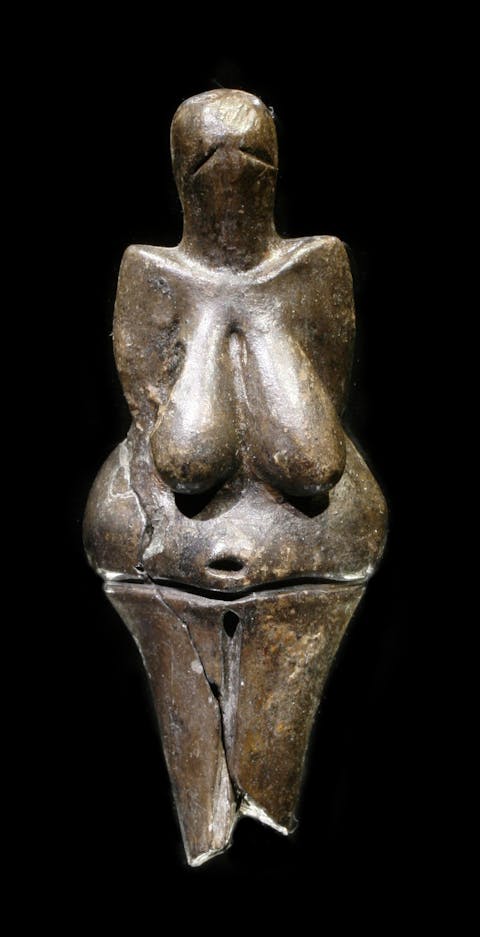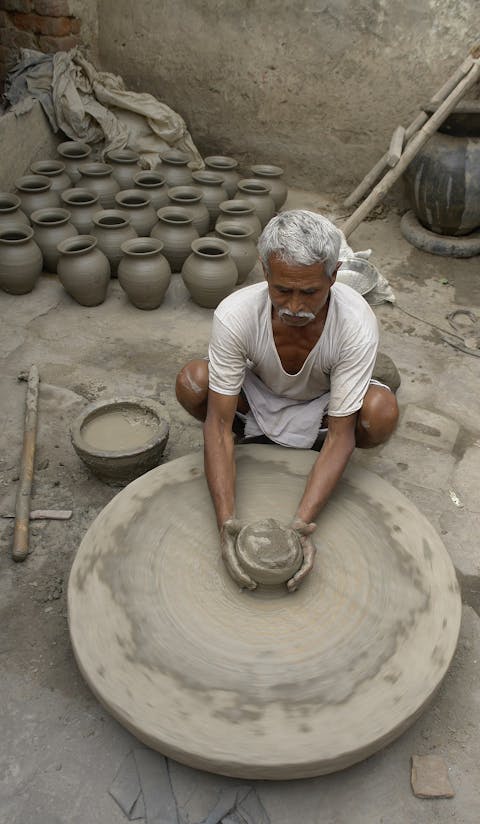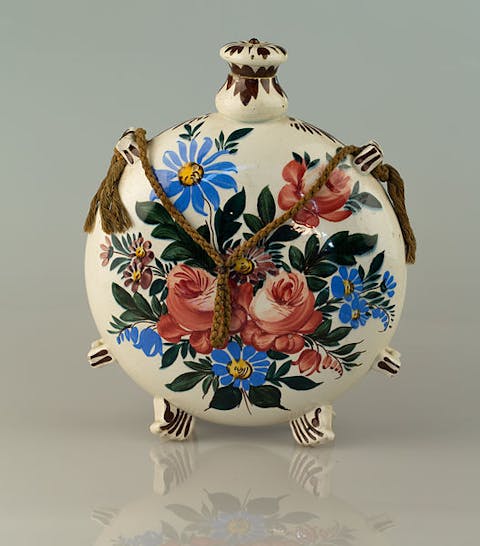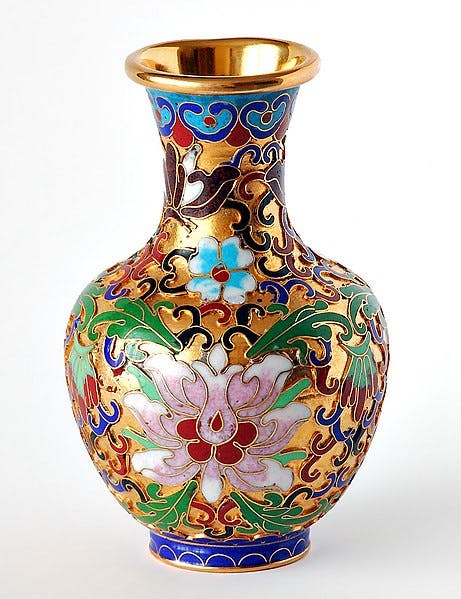Buyer’s Guide to Ceramics and Porcelain
Written by Pontus Silfverstolpe
Looking back on history, it's fair to state that ceramics and porcelain are two of the oldest mediums that have lent themselves to the creation of artwork. Reports say that even back in 25,000 BC, people sculpted and molded stone and clay. Today, the hobby of collecting ceramics and porcelain is an ever-growing field.
What is Ceramic?
The term ceramic covers a vast range of wares made of various types of clays, including porcelain, earthenware, soft paste, pottery, terracotta, stoneware, bone china, majolica, and Delftware. While many of those wares were produced by humans as early as 28.000 BC in various civilizations, some were invented much later.
Even though there are numerous techniques to create ceramics, all are divided into three categories: porcelain, earthenware, and stoneware. Porcelain is fired at over 1400 ºC, which makes the material waterproof. Earthenware and stoneware, on the other hand, are fired at 600 to 1300 ºC, making them porous.
Do you own ceramics that you want to value? Start your appraisals here!
The world’s oldest known ceramic
The Venus of Dolní Věstonice is the oldest ceramic known to exist. It was found in the Czech Republic in the year of 1925, and is reported to be 30.000 years old! It’s a ceramic statuette of a nude female figure with a height of 4.4 inches (11 centimeters), and a width of 1.7 inches (4.3 centimeters). The figurine is made of a clay body fire (500–800 °C).
The female has the general appearance of other Venus figurines, with a small head and legs, but big breasts and hips, which symbolise fertility. The statuette is located at the Moravské zemské muzeum in Brno, Czech Republic, and is considered to be priceless.

Venus of Dolní Věstonice. (Public Domain)
The Value of Ceramic
Today, ceramic items are widely available, whether it's a rustic bowl made of terracotta or a porcelain dinner service. The value of ceramic items depends on their origin, age, maker or brand, and quality. Ancient ceramics, for example, Greek pottery, Italian Renaissance majolica platters, English bone china plates, or imperial Chinese porcelain cups with blue and white decorations, can be worth thousands of dollars and sell for many more during the right auction.
What is Porcelain?
While it’s thought that porcelain was first invented in China during the reign of the Tang dynasty (618–907), the new discoveries suggest that it was already produced in Japan several hundred years earlier. Porcelain is made of a special type of clay, so-called kaolin, which gives the porcelain a lustrous milky appearance and translucency when looked at under the light. Although fragile, kaolin clay is extremely strong, as its structure is much less porous than other clays after firing in the kiln.
For centuries, and especially in the West, Asian porcelain was thought to be such a luxurious product it was often referred to as “white gold”, and often it was much more expensive than the precious metal itself. For China and Japan, porcelain trade with the West was one of the most prosperous, and over the years, the Asian porcelain manufacturers were offering the porcelain products made especially for the Western market. The technology of producing porcelain was held top secret.
Are Porcelain and Ceramic the Same Thing?
Although already explained above, it’s a very common question, hence this clarification. Porcelain is a type of ceramic. There are different types of ceramic – porcelain being one of the big three along with earthenware, and stoneware. However, porcelain is the most sought-after method.
Is Porcelain Worth Anything?
The easy answer is yes. However, as with all types of collectibles, the vast majority aren’t worth a fortune, but the right porcelain in the right condition could be worth millions! The most valuable are the antique porcelain pieces from the 18th and 19th centuries, made for royal courts. However, it’s not only ancient porcelain that holds value. A complete tea or dinner service made by famous manufacturers like Meissen, Sèvres, or designers such as Marimekko are also sought by collectors and can hold high values during auctions.
Read more below to find out more about value. If you have porcelain that you’ve bought or perhaps inherited, Value My Stuff can help you to find out the value. With a quick 24 or 48-hour appraisal, you’d receive an appraisal certification. Follow these easy steps to learn more!
Is Pottery Worth Anything?
The market for collectible pottery is significant. European art nouveau artists rediscovered and experimented with ceramics during the early 20th century, creating very interesting nature-inspired vases and other dishes. Terracotta plates or sculptures designed by Pablo Picasso or Juan Miró are highly collectible. Single plates from early editions made by Picasso in collaboration with Madoura pottery studio can be had for as much as over $60,000.

Pottery at work, Jaura, India. (Public Domain)
How Much Are Porcelain Dolls Worth?
Porcelain dolls are, in fact, one of the most extensive areas of ceramics. They gained popularity in the 18th century and became popular children's toys. Soon, they also became a collector's item. Collectors were looking for models in intricate costumes and realistically looking hair. The dolls produced before 1930 are very valuable, and the quality dolls made and marked by German manufacturers such as Meissen or KPM Berlin always do well in auctions.
In 2014, a collector paid $300,000 for a very special doll. It was a porcelain bisque doll with a non-glazed surface, made by the French sculptor Albert Marque for the Parisian couturier Jeanne Margaine-LaCroix in 1916. It’s still, to date, the most expensive porcelain doll ever sold.
Does Age or Natural Flaws Affect the Value of Ceramics and Porcelain?
Due to the delicate nature of ceramics and porcelain, rare items of perfect condition are hard to find. Therefore rare and flawless items always command a high value. However, in light of this, unless your item is very unique, any sort of flaw on the ceramic, (whether incurred by the creator or through general ware), will drastically reduce the value of an item. It’s essential to try and familiarize oneself with ceramics as much as possible so that spotting irregularities or chips in the works becomes more natural.
Furthermore, it is crucial to understand that the age of an item does not always mean a higher value. However, an item created by a respected maker from 1850 will most likely command a higher value than an item from the same company made in the last ten years. The rarity of an item and its condition is of the highest importance, if you wish to buy in this field.

Radkersburg Bottle. (Public Domain)
Are There Particular Companies One Should Look For?
Like any sector of the art world, there are specific companies or artists in ceramics and porcelain that command higher prices than others. Royal Doulton, Royal Worcester, and Minton are some, to name a few. The intense care, with which these materials must be handled, only adds to the prowess of such companies that have managed to retain a certain level of expertise over many generations.
Always Check For Markings
Any ceramic or porcelain item of worth or note will have a maker's mark or back stamp, as it is commonly known. Such markings can often tell a lot about the worth of the piece and occasionally mean it is also possible to tell the age of the object, and created it. The maker’s mark is applied in three different ways:
– Underglaze marks
– Overglaze marks
– Incised marks
The value of the piece is not affected by the type of mark presented on the surface; it’s simply a matter of the maker's personal preference.

Ming Dynasty Xuande Archaic Porcelain Vase and Six Character Marks. (Public Domain)
How do I value my item?
The easiest way to find out if you are getting a bargain is to go to an impartial appraiser for a valuation. At Value My Stuff, we offer a convenient online service and have professionals (who have all worked for the world's leading auction houses) that will give you an accurate and impartial market value of your piece as well as accompanying historical information that may add to its worth. Start your appraisal here!
Ming Dynasty Vases
Appreciated and loved worldwide, the Ming dynasty vases are known as the ultimate design symbol with incredibly sophisticated and unique patterns and designs. The strikingly beautiful vases were created between the years 1368 and 1644. The value varies on rarity and condition.
Most Expensive Vases in the World
Even if you’re not an expert on vases, I’m sure the first country you associate expensive vases with is China. Looking at the most expensive vases ever sold at auction, the list is dominated by Chinese vases. Here are the world’s five most expensive vases:
1) Chinese Imperial Phoenix Revolving Vase, sold in 2021 for 41.6 million dollars.
2) Chinese Jiqingyouyu Reticulated Vase, sold in 2012 for 32.8 million dollars.
3) Chinese Painted Enamel and Bronze Qing Dynasty Vase, sold in 2014 for 24.7 million dollars.
4) Chinese Ming Dynasty Meiping Vase, sold in 2011 for 22.6 million dollars.
5) Chinese Famille-Rose Butterfly Double-Gourd Vase Pair, sold in 2017 for 19.4 million dollars.
Do you have a vase that you want to appraise? Follow these easy steps.

A Chinese vase. (Public Domain)
Pontus Silfverstolpe is a co-founder of Barnebys. With more than 25 years in the art and auction industry, he is a valued speaker and recurring columnist in several magazines. He is also the initiator of Barnebys Magazine and hosts the Barnebys podcast "Eye of the Beholder". Pontus appreciates everything from baroque sculptures to contemporary art and loves working in the world's most sustainable industry full of fantastic stories and amazing people.

